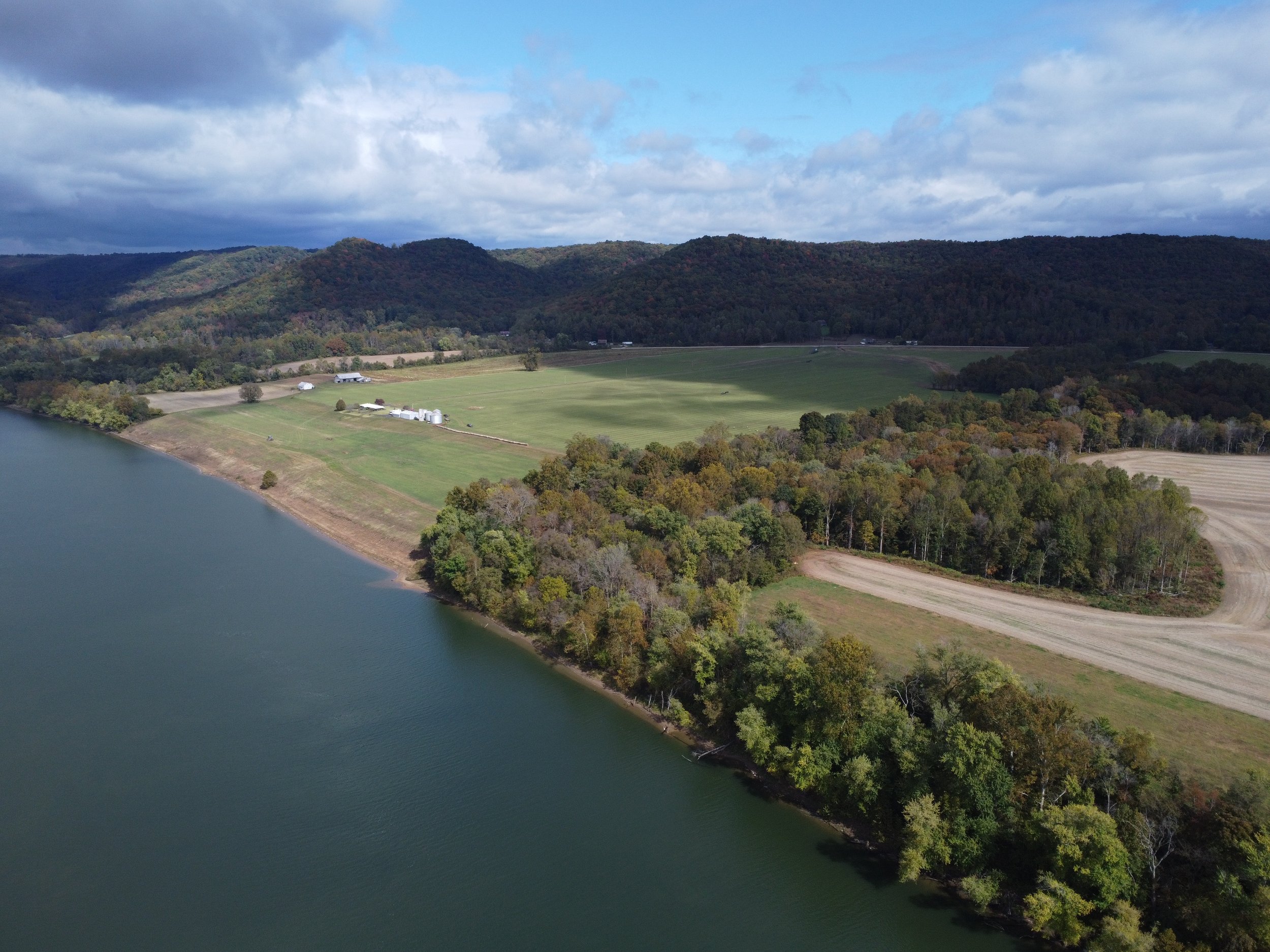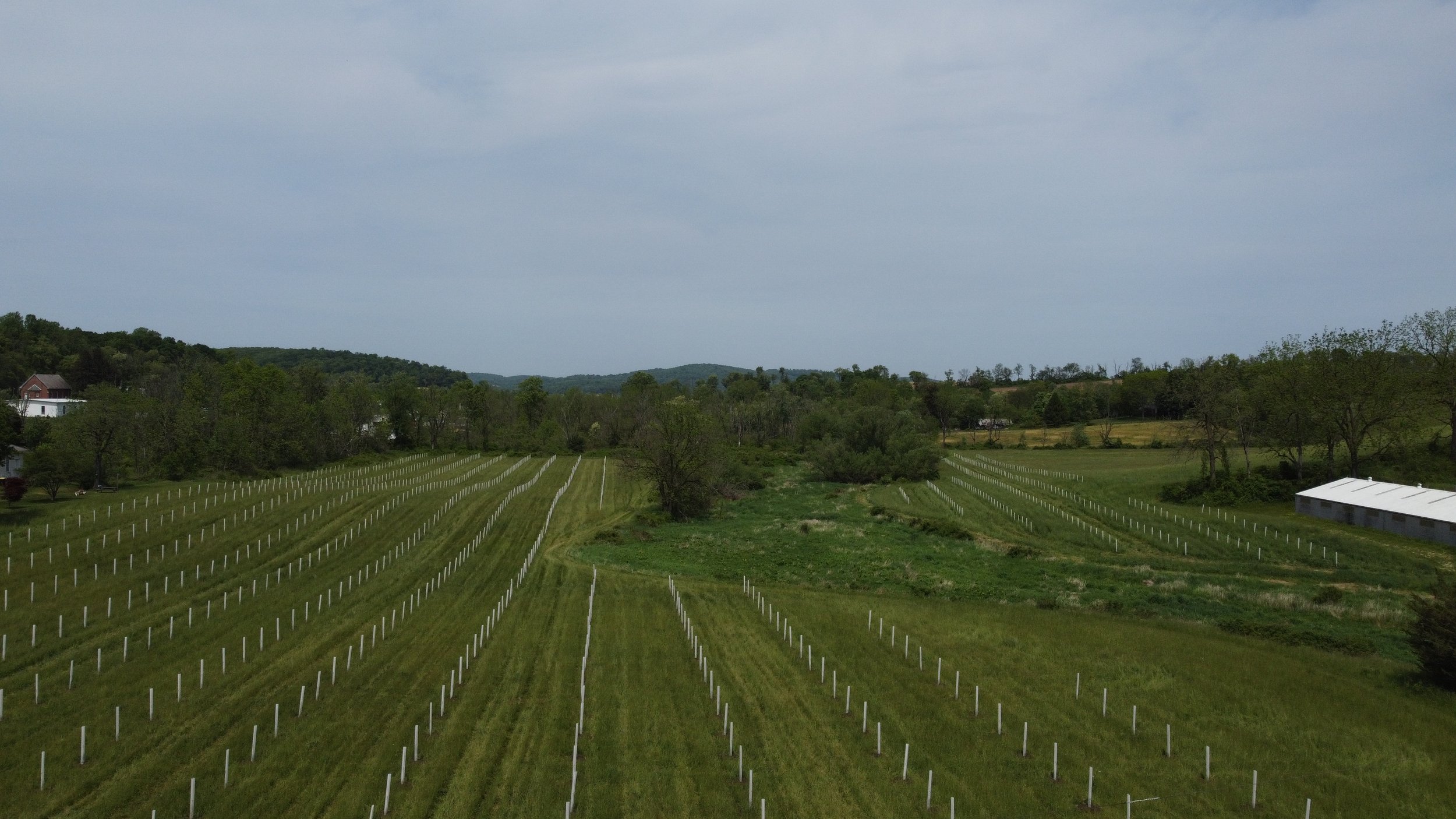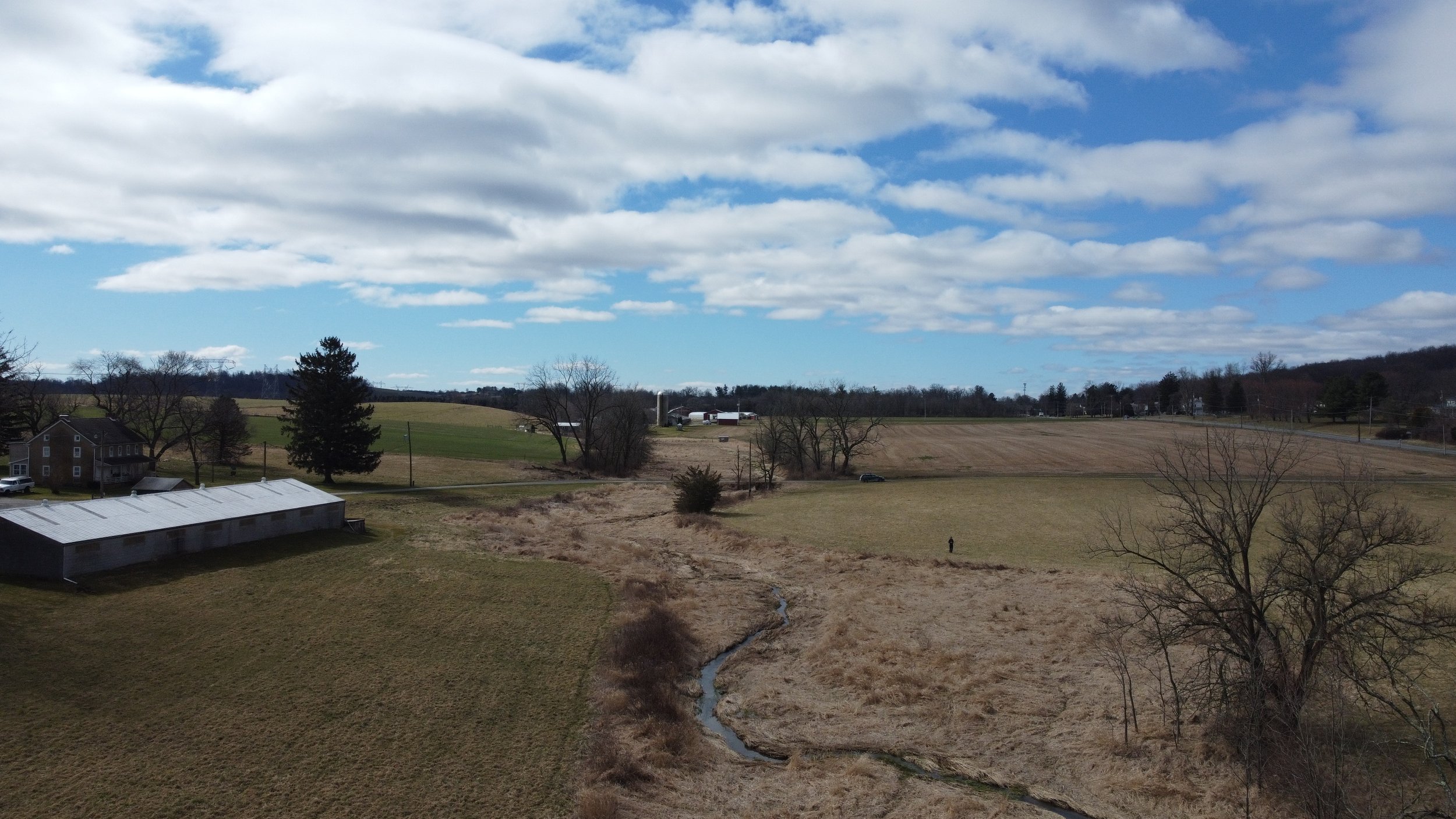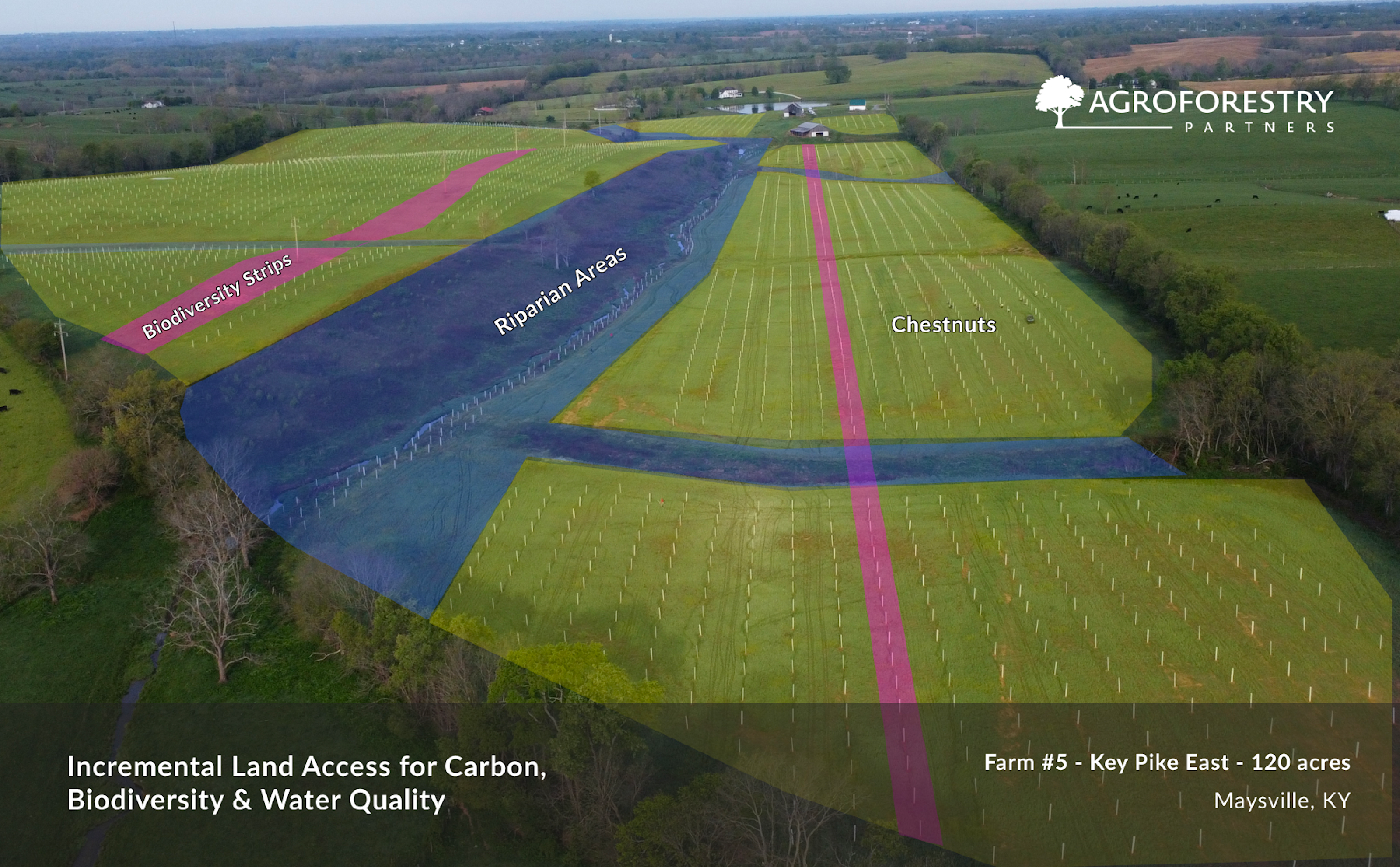Improving Water Quality with Agroforestry
We know agricultural runoff can harm our waterways, but finding effective solutions that we can implement at scale can be murky. Farmers who want to improve water quality face a confusing mix of regulations and funding options that change by state and county. Operators must weigh a host of regenerative options: cover crops, conservation tillage, nutrient management plans, no-till, buffer zones (the list goes on) — each with its own agronomic and economic considerations.
Among these options, trees stand out as a powerful tool for farms. When planted thoughtfully, trees can reduce water pollution, lower costs, and offer new income sources. In this article, we’ll frame the importance of protecting our waterways, the many benefits trees bring to both farms and waterways, and examples of this being done to date.
How Agriculture Affects Water Quality
Agricultural pollution happens in two main ways: point source and nonpoint source. Point source pollution comes from a single spot, like a manure lagoon or a large animal farm. Nonpoint source pollution is broader – things like fertilizers, pesticides, and other chemicals can wash into rivers and streams through rain and runoff. This type of pollution is massive: over 3.5 billion pounds of fertilizer reach the Gulf of Mexico annualy, while an estimated 286 million pounds of nitrogen and 19.9 million pounds of phosphorus enter the Chesapeake Bay each year.
This pollution harms ecosystems. Too much nitrogen and phosphorus in water causes “dead zones,” where fish and other marine life can’t survive due to low oxygen levels. Famous examples include dead zones in the Chesapeake Bay, Great Lakes, and the Gulf of Mexico. Beyond the US, a combination of pollution and climate change pose an existential threat to aquatic life writ large, with 90% of all marine life threatened with extinction by 2100. Agrichemicals in drinking water also pose a threat to public health, linked to cancer, brain damage, fertility problems, and hormone disruption. Unsurprisingly, 70% of Americans are concerned about the quality of their tap water.
Risk Reductions and Cost Savings
Although nonpoint source agricultural runoff is exempt from the Clean Water Act, in some places, lawsuits have been leveled against agricultural communities over pollution-wrought damage to public watersheds, with cleanup costs exceeding $2 billion annually. Similarly, nuisance suits against CAFOS (or concentrated animal feeding operations) for point-source pollution are on the rise, suggesting mounting public opinion favoring stricter environmental protections. Asset managers, farmers and agribusiness should respond accordingly, shifting production practices to reduce not only their downstream impact, but also liability and risk.
Ultimately, practices that reduce nutrient runoff benefit a farm’s bottom line, keeping nutrients in the soil where plants can use them. Given that the cost of fertilizer rose exponentially during the pandemic – continuing to rise even post-pandemic – many farmers have shifted their operations in small ways, opting to grow soy, a nitrogen fixing crop, over corn. But these temporary solutions do not resolve the larger issue: the amount of fertilizer lost in conventional systems is still too high.
Fertilizer Use Efficiency refers to the rate at which fertilizers are used by a cropping system. Importantly, Nitrogen Use Efficiency (NUE) and Phosphorus Use Efficiency (PUE) can determine not only yields, but also the amount of nutrient runoff entering waterways. On average, NUE and PUE globally stand at 30% and 16%, with the remainder is lost to leaching, runoff, and volatilization. All told, this can result in billions of dollars in fertilizer wasted. Although a number of environmental, spatiotemporal and genetic factors impact the FUE of soil-crop systems, regenerative practices such as agroforestry have been shown to reduce fertilizer losses, cycling these nutrients back into the soil.
Why Trees Are Essential For Protecting Water Quality
The impact of a given practice on water quality can vary wildly from place to place, soil to soil, and farmer to farmer, resulting in conflicting notions about the efficacy of certain practices. For example, while no-till is generally assumed to be less impactful than conventional tillage, studies suggest that runoff and leaching are similar in these systems. The efficacy of cover cropping can be similarly variable depending on factors like establishment, soil temperature, and species selection.
Because of the inherent complexities of crop-soil systems, experts agree that stacking regenerative practices is the best way to minimize agricultural pollution. In general, annual agriculture leads to more runoff and erosion than perennial systems, though agroforestry – the intentional combining of annuals and perennials – can improve water quality better than annuals alone, while also introducing new streams of farm income.
An example of how riparian areas are designed into this farm in Kentucky. Read more about the project here.
How Agroforestry Improves Water Quality
Soil Structure: Trees contribute organic matter (OM) to the soil through root biomass and above-ground residues. Reduced disturbance enables the buildup of OM, enhancing soil structure, water infiltration, and water-holding capacity.
Erosion control: Trees roots stabilize soil, while leaf canopies slow rainfall, reducing erosion caused by water runoff. This is especially important in hilly or sloping areas where erosion can lead to sedimentation.
Nutrient management, filtration and buffering: Trees support nutrient cycling by trapping and storing nutrients in organic forms. Additionally, trees along waterways act as a natural filter trapping sediment, pollutants, and nutrients.
Shade and temperature: By shading waterways, trees regulate temperature. Cooler water temperatures support healthier aquatic ecosystems.
Soil biodiversity: Trees support beneficial soil organisms such as earthworms and soil microbes that enable nutrient cycling, pest control, and soil health maintenance.
Choosing the Right Trees for Your Land’s Context
Planting trees as watershed solutions can be economically viable, with studies finding $1.75 returned for every $1 invested.
Different trees work best in different areas, so farmers need to choose species based on local conditions and goals. Here are some specific examples to illustrate context-based solutions.
Commercial buffers: In the low-land, elderberry and American hazelnut – two species that tolerate wet feet – planted at commercially viable scales. On slopes, moneymakers like chestnut provide erosion control and revenue diversification.
Silvopasture: Native species mixtures selected for calorie and shade provision, alongside willow and mulberry fodder, increase animal welfare, weight gain and milk production for graziers.
Alley cropping: Fast-timber species grown alongside commodity grains. Our farmer partner planted black locust and barley.
Traditional forest buffers: A mixture of native riparian species, directly abutting stream banks and waterways.
Overyield, an agroforestry analytics tool, can be used to design and model the economics of these systems.
How to Scale Working Riparian Buffers
Despite their benefits, many farmers are typically unable to transition large acreage from annual agriculture to perennial systems – or to implement conservation practices more generally – due to the costs, long term risks, and uncertainty associated with adopting new practices.
Barriers include upfront costs like seed or nursery stock, knowledge gaps, and offtake concerns, though additional complexities arise due to land tenure and non-operating ownership.
That said, there are examples that show these barriers can be overcome, and serve as an example to grow the adoption of productive conservation practices more broadly. Propagate worked alongside Stroud, farmers, government agencies and a handful of other partners to pilot working buffers in Eastern PA, unlocking financing opportunities that helped plant over 20,000 trees on 60+ acres.
Want to learn more?
Propagate makes it easy for farmland owners to design, plant, and manage agroforestry systems so that they can increase the cash yield of farmland. We can help you design and deploy water quality solutions or other impact investments that fit your budget and goals. Contact our team to learn what is possible on your land.







